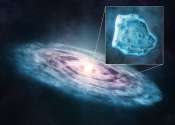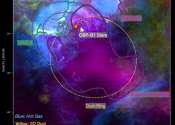Webb's first full-color images, data are set to sound
There's a new, immersive way to explore some of the first full-color infrared images and data from NASA's JWST—through sound. Listeners can enter the complex soundscape of the Cosmic Cliffs in the Carina Nebula, explore ...









